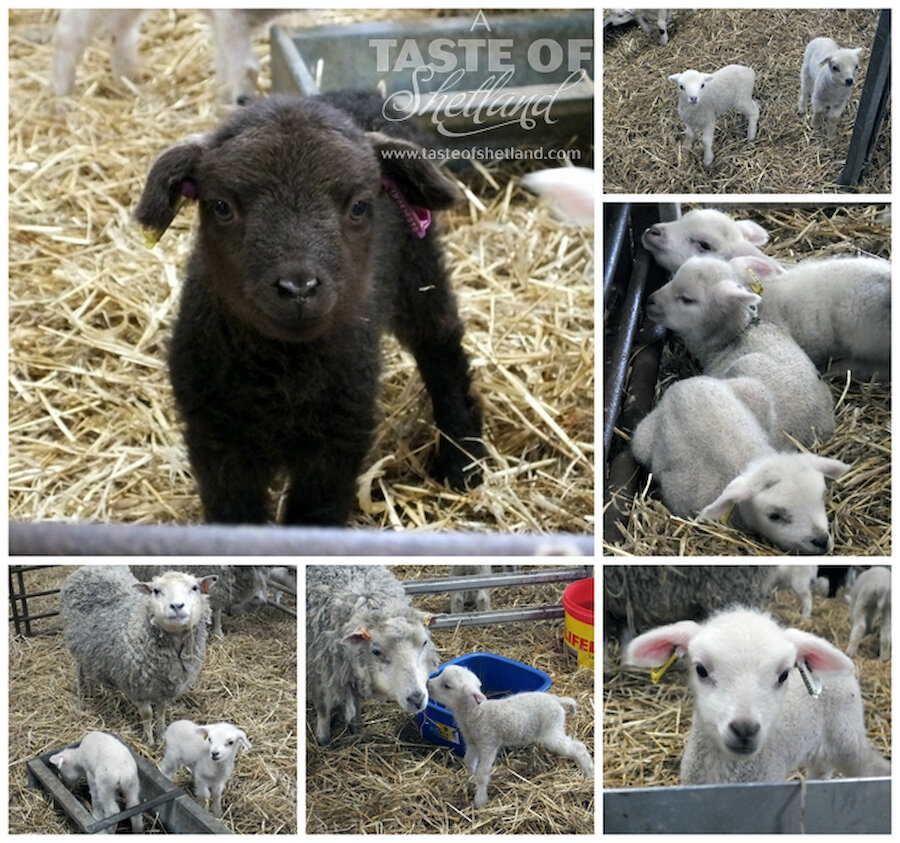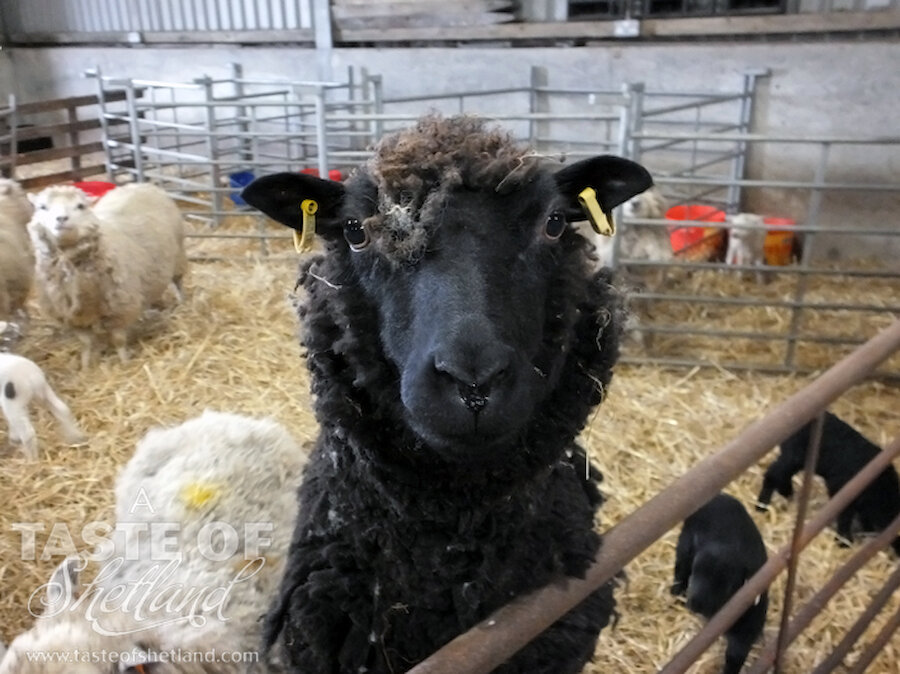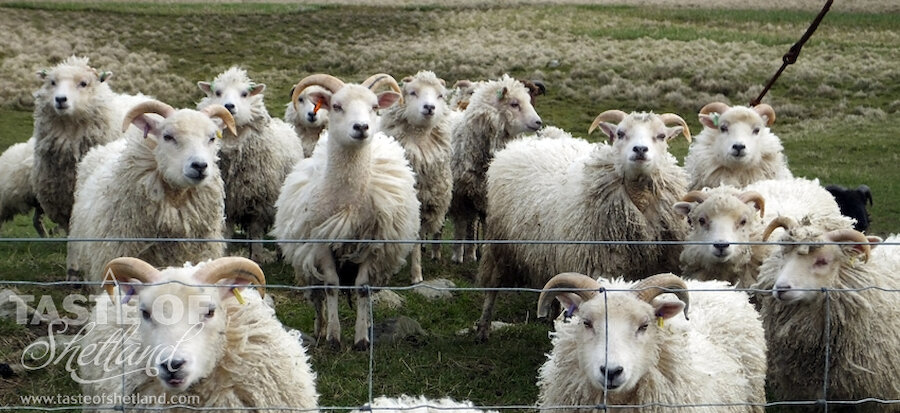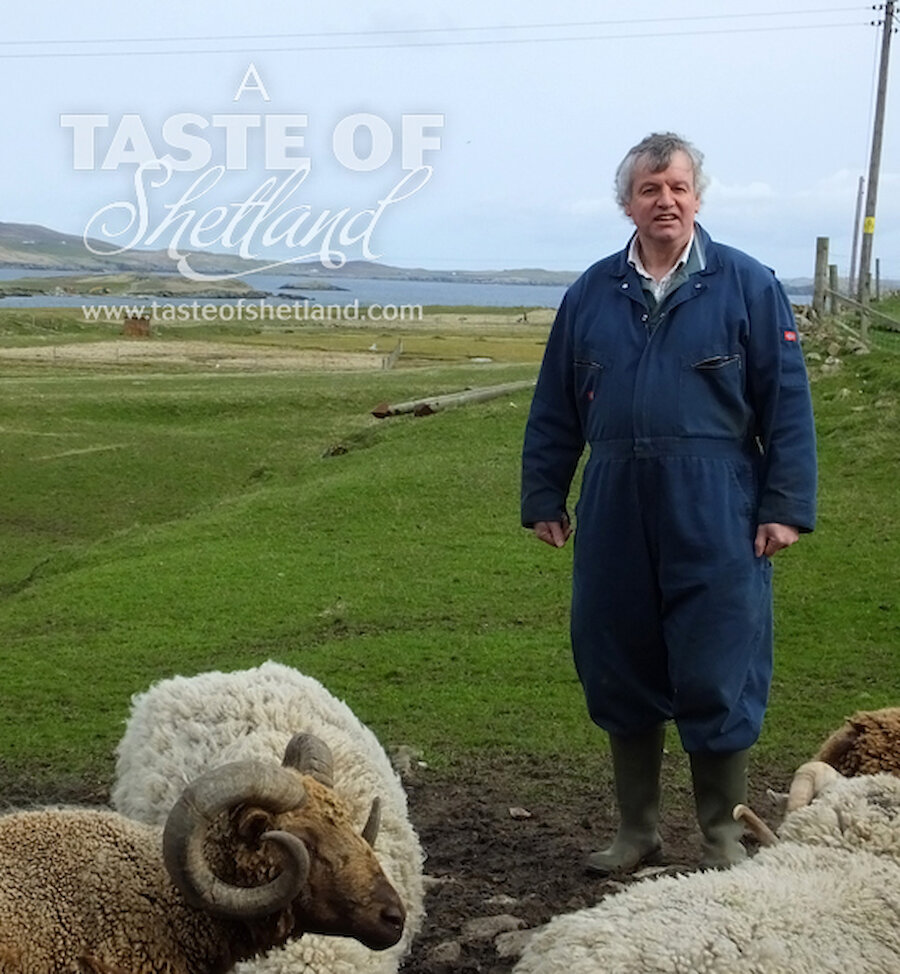It's lambing time in Shetland!
Crofters up and down the isles are experiencing long sleepless nights as lambing season is in full swing. For one crofter, this years' lambing has finished, so he can relax somewhat.
Last week I caught up with Richard Briggs, a pure bred native Shetland sheep crofter based in Nesting, on the east side of Shetland. I arrived at his croft first thing in the morning, just in time to follow him on his feeding rounds.
Richard has been lambing for two weeks, assisting 67 ewes to deliver 97 surviving lambs. His lambs are born a fortnight earlier than those on many other Shetland crofts and within a short time frame, but this means when it comes Autumn all of his lambs will be of similar size.
The lambs and their mothers are kept indoors together in what can only be described as a very noisy sheep antenatal ward. The cacophony of the lot of them waiting for their breakfast was deafening, so I had to wait until Richard finished feeding before we could have a chat.
Richard grew up on his uncle's farm in Leicestershire, England, where he learned from a very young age how to work with dairy, sheep and crops. He originally trained as an engineer but at the age of 30 he decided that wasn't the right path for him. In the early 80's under the government Training Opportunities Scheme he gained a funded place at an agricultural college and retrained as a dairy farmer.
Just as he finished his training the government introduced milk quotas, so there was very little work for a newly qualified dairy farmer. He set up as a self-employed casual farm worker and ended up getting some sheep of his own. The sheep just clicked with him, he says, and in April 1990 he moved to Shetland with his wife. The opportunity to buy some land in Nesting presented itself and there he set up farming pure bred native Shetland sheep.
Pure bred native Shetland sheep are smaller and hardier than many other sheep varieties. They have evolved to withstand and thrive in the often harsh Shetland climate. They may be half the size as other lamb but the distinct flavour of its naturally lean, succulent meat make Shetland lamb well sought after for the lamb connoisseur.
In a few weeks when the lambs are a little older they will be put out to rough pasture. They have 150 acres of heathery, herb-rich grazing to happily spend the summer on, the way nature intended.
Briggs' Lamb has the Protection of Designated Origin status. This is awarded to Shetland Lamb that is less than 12 months old and is both produced and slaughtered in Shetland. Pure bred Shetland lamb is not easy to source, and it is considered a delicacy. Most of his lamb is sent south to restaurants on the UK mainland, but you can order a box of your own through his website. Briggs' lamb is freshly butchered, chilled and packed suitable for restaurants and for home freezing. 18-month old hogget (pictured above) and mutton are also available in the same form.
Alternatively, Richard can source seaweed fed lamb from a friend's croft, for another unique, distinctly flavoured meat.
For recipe ideas including: Salted and shredded native Shetland lamb and potato cake with black kale, native Shetland lamb cutlets with teriyaki sauce, fillets of native Shetland lamb with kidney, wild mushroom and roast pumpkin and roasted loin of native Shetland lamb with roots see Richard Briggs' recipe index.
Shetland lamb is a seasonal product. To order your own Shetland lamb it's best to do so earlier in the year for delivery in October. You can order native Shetland lamb via Richard Briggs' website.







